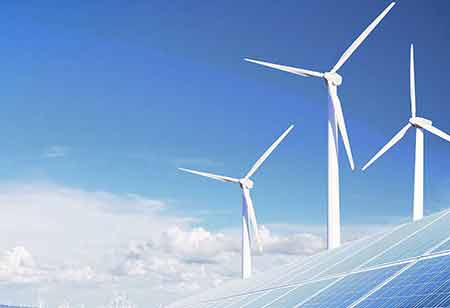Thank you for Subscribing to Energy Business Review Weekly Brief
Effective Technologies for Renewable Energy Industry
The renewable energy market is growing with increased demand for clean energy sources.

By
Energy Business Review | Tuesday, June 14, 2022
Stay ahead of the industry with exclusive feature stories on the top companies, expert insights and the latest news delivered straight to your inbox. Subscribe today.
New technologies convert the renewable energy landscape by driving energy from renewable sources and decreasing carbon emissions.
The renewable energy market is growing with increased demand for clean energy sources. Renewable energy's climb has transformed global markets, and change led by renewables is happening tremendously.
The following five technologies will convert the renewable energy industry:
Wind and solar
Wind turbines & solar panels are the most familiar form of renewable energy. These are the most usually seen power sources in rural areas, transforming the market. As the International Energy Agency reported, by 2024, 30% of the world's energy will be a renewable form of energy produced through solar and wind projects. Still, the tech powerhouses like Apple, Google, and Amazon have made solar investments.
Electrification
Experts trust that advancements in electrification will hasten the transition to renewables in the coming decades. As per some estimates, renewable-based electrification of European industry, buildings, and transportation will allow the continent to reduce its energy-related carbon dioxide emissions by 90% by 2050. In addition, there will also be new uses for energy, such as the electrolysis creation of hydrogen from water, the recycling of carbon dioxide, and the production of nitrogen for fertilizers by capturing it from the air.
Power to X
Powe-to-x incorporates all technologies transforming electricity into synthetic renewable fuels, heat, or hydrogen. It's a game-changing technology that can accelerate the transition to renewables by increasing artificial fuel production and drastically cutting fossil fuel emissions in industries ranging from steel to food to chemicals and fertilizers. It could also support addressing long-term energy storage problems and managing the renewable energy supply's ups and downs.
Distributed generation
The circulated generation will bring rebellion in the field of renewables. Broadening distributed generation has various benefits, including lowering reliance on centralized power sources, enhancing grid dependability, and making small-scale renewable power sources economical. In addition, distributed generation is much more effective when integrated with smart grids, controlled by computers to fine-tune transmission. In recent years, distributed generation has grown fastly, and this trend is projected to continue.
Energy storage
Energy storage technologies can speed up the shift to renewables. This is because it integrates several technologies under a single portfolio. Although the intermittent nature of wind and solar sources, energy storage enables an efficient flow of power to be maintained.






